Occupational environment monitoring of a semiconductor (chip) manufacturing factory
99,000 ₫
Note: The above price is calculated for one sample, and the price may fluctuate depending on the area of the environment to be monitored and market movements. For more accurate pricing support, please refer to the price list or contact our consulting staff directly.
Monitoring the environment of a semiconductor (chip) manufacturing factory is a session of collecting, analyzing, and evaluating factors at the workplace that may harm workers’ health.
Table of Contents
Toggle1. Overview of semiconductor (chip) manufacturing factory
a. What is a semiconductor (chip) manufacturing factory?
A factory manufacturing semiconductor (chip) is a manufacturing facility designed to produce semiconductors – one of the most important electronic components in modern electronic devices such as computers, smartphones, digital cameras, game consoles, and many other devices. A semiconductor is an integrated circuit designed to perform computing functions and control the operations of electronic devices.
The manufacturing of semiconductors is a very complex process and requires many different steps, including design, survey, simulation, fabrication, and testing. Semiconductor manufacturing factories use complex manufacturing processes, requiring expensive equipment and professional technicians to produce chips with high precision and high reliability.
Semiconductor manufacturing is a very important technical field, playing a crucial role in the development of electronic technology and the computer industry.

b. Manufacturing stages in a semiconductor (chip) manufacturing factory
The semiconductor manufacturing process is a complex process that includes many stages. Below are the main stages in the semiconductor manufacturing process:
- Circuit design: This is the stage of designing electronic circuits, where designers use CAD software to create detailed technical drawings of the circuit.
- Survey and simulation: After completing the circuit design, engineers use simulation tools to check the correctness of the design and simulate the features and performance of the semiconductor.
- Fabrication: Once the design and simulation are completed, electronic circuits are created on a wafer using fabrication technologies such as lithography, etching, deposition, and implantation. This process is carried out in a cleanroom to prevent dust and debris from sticking to the surfaces.
- Processing and assembly: After the electronic circuits are created, the wafers are processed using technologies such as coating and cutting. Then, the electronic circuits are separated from the wafer and assembled onto the final integrated circuits.
- Testing and quality control: Finally, the integrated circuits are tested to ensure they meet standards for performance, quality, and reliability. The integrated circuits are tested with specialized equipment to ensure they operate correctly and meet quality standards.

c. Types of machinery used in semiconductor (chip) manufacturing factory
The machinery used in semiconductor manufacturing factories is very diverse and complex. Below are some common types of machinery used in the semiconductor manufacturing process:
- Photolithography machine: Used to print patterns of conductive layers on the wafer.
- Photoresist coater: Used to apply photoresist to the wafer, which is a light-sensitive material used to protect areas from etching.
- Etching machine: Used to create patterns and structures on the wafer by etching conductive layers.
- Ion implantation machine: Used to perform irradiation technologies to form doped regions on the wafer.
- Metal pressing machine: Used to press connectors and other parts onto the wafer.
- Quality inspection machine: Used to test the performance and quality of the manufactured integrated circuits.
In addition, many other types of machinery are used in semiconductor manufacturing factories, depending on each stage in the manufacturing process.

d. What occupational diseases can workers in semiconductor (chip) manufacturing factories face?
The semiconductor (chip) manufacturing industry is a high-tech and complex field where workers are exposed to many toxic substances and pollutants. Therefore, the occurrence of occupational diseases is very common in this industry.
Some common occupational diseases among workers in semiconductor manufacturing factories include:
- Headaches, fatigue, dizziness, shortness of breath, nausea, and knee pain due to exposure to harmful chemicals such as ammonia, chlorine, acetone, sulfur hexafluoride, nitrous oxide, etc.
- Respiratory and dermatological problems due to exposure to dust, micro particles, and toxic substances.
- Respiratory diseases caused by breathing in polluted air with high dust concentrations.
- Hand, foot, and mouth disease due to contact with many people in a confined space without proper ventilation.
- Vision problems caused by exposure to strong light from machinery during the manufacturing process.
To minimize the risk of occupational diseases in semiconductor manufacturing factories, workers need to wear adequate personal protective equipment, comply with occupational safety regulations, and receive proper training before engaging in work.

e. Common types of semiconductor (chip) on the market
Currently, there are many popular types of semiconductors (chips) on the market, including:
- Intel: The most famous semiconductor (chip) brand in the world. Intel products are widely used in personal computers, laptops, servers, and other electronic devices.
- AMD: AMD is also a large and well-known semiconductor (chip) brand. AMD products compete directly with Intel in the semiconductor (chip) market.
- ARM: ARM is a company specializing in manufacturing semiconductors (chips) for mobile devices, tablets, and IoT devices. ARM chips are often integrated directly into devices and consume little power.
- Qualcomm: Qualcomm is a company specializing in manufacturing semiconductors (chips) for mobile phones and IoT devices. Qualcomm products are often integrated into devices and support many wireless connectivity features.
- Apple: Apple is one of the largest electronics manufacturers in the world and produces semiconductors (chips) for its own products. Apple’s chips are directly integrated into their products, including iPhone, iPad, and Mac.
- NVIDIA: NVIDIA is a company specializing in manufacturing graphics and parallel processing semiconductors (chips). NVIDIA products are widely used in graphics applications, gaming computers, and Bitcoin mining computers.
In addition, there are many other brands such as IBM, Samsung, Texas Instruments, etc.

2. Overview of occupational environment monitoring services
a. What is occupational environment monitoring in semiconductor (chip) manufacturing factory?
Occupational environment monitoring (or occupational environment measurement) in semiconductor (chip) manufacturing factories is the activity of collecting, evaluating, and analyzing measurement indicators of occupational environmental factors at semiconductor (chip) manufacturing factories, in order to take timely measures to reduce environmental impacts on workers’ health and prevent occupational diseases. Occupational environment monitoring is a mandatory regulation for semiconductor (chip) manufacturing factories.
Occupational environment monitoring plays the most important role in taking care of, protecting, and improving workers’ health because the main resource of an enterprise and the direct creator of profit is the worker. Workers who are regularly exposed to hazardous factors and occupational risks exceeding permissible standards will suffer health impacts and occupational diseases.
REGISTER FOR OCCUPATIONAL ENVIRONMENT MONITORING SERVICE
b. Occupational environment monitoring program of An Toan Nam Viet
The occupational environment monitoring program of An Toan Nam Viet is a program researched by monitoring engineers in the field of occupational safety and environmental protection. With the goal of ensuring workers’ health and safety, this program uses modern measurement methods to monitor air quality, water, and microclimate, physical, and dust factors in the occupational environment. This is a very important program in ensuring a safe working environment and protecting workers’ health.
In addition, the occupational environment monitoring program of An Toan Nam Viet also plays an important role in researching and developing new solutions to improve occupational environment quality. With the dedication and professionalism of the monitoring experts, An Toan Nam Viet’s exclusive monitoring program is becoming a breakthrough in occupational safety management and environmental protection in Vietnam.

c. Standardization in occupational environment measurement procedures
Standardization in occupational environment measurement procedures of An Toan Nam Viet is a very important aspect in ensuring the quality of measurement results. To ensure the accuracy and reliability of the results, this program applies standardized procedures and standards recognized by the Ho Chi Minh City Department of Health. This ensures that the collected data will be highly reliable for occupational environment assessment and decision-making on environment improvement to protect workers’ health.
These standardized procedures also ensure that measurement results are carried out by a team of monitoring specialists with high qualifications and many years of experience, enabling managers and experts to trust the results from An Toan Nam Viet and make accurate, valuable decisions in protecting workers’ health and the environment.
By applying standardization in occupational environment measurement procedures, An Toan Nam Viet demonstrates its commitment to ensuring a safe working environment and protecting workers’ health, while also contributing positively to the development and improvement of occupational safety management and environmental protection quality in Vietnam.
d. Occupational environment monitoring report in semiconductor (chip) manufacturing factory
Occupational environment monitoring results are prepared according to Form No. 04 Appendix III issued together with Decree 44/2016/ND-CP and are made into 02 copies: 01 copy sent to the labor facility that signed the occupational environment monitoring contract and 01 copy kept at the monitoring organization.
The retention period of occupational environment monitoring results is regulated by law as permanent record storage.

e. Frequency of occupational environment monitoring according to legal regulations
According to Clause 2 of Article 18 of the Law on Occupational Safety and Hygiene 84/2015/QH13, employers must conduct occupational environment monitoring to assess harmful factors at least once a year.
f. Deadline for submission of occupational environment monitoring results report according to legal regulations
The deadline for submission of reports is before December 31 every year. Enterprises belonging to manufacturing facilities are required to submit occupational environment monitoring results reports to the Department of Health at the locality where the manufacturing facility, business headquarters, and workplaces are located.
When there are changes in technology processes, manufacturing processes, or when renovating and upgrading labor facilities that may generate new hazardous factors to workers’ health, enterprises belonging to manufacturing facilities must update occupational hygiene records related to harmful factors that require occupational environment monitoring.
g. Penalties for violations of occupational environment monitoring regulations for employers
According to Article 27 of Decree No. 12/2022/ND-CP dated January 17, 2022, Regulations on administrative penalties in the field of labor, social insurance, and Vietnamese workers working abroad under contracts:
- Clause 2: A fine of VND 2,000,000 – 5,000,000 for employers who do not publicly announce to workers at the place of occupational environment monitoring and at the place where dangerous factors are inspected, assessed, and managed immediately after the results of occupational environment monitoring and dangerous factors inspection, assessment, and management at the workplace are available.
- Clause 3: A fine of VND 20,000,000 – 40,000,000 for employers who fail to conduct occupational environment monitoring to control harm to workers’ health as prescribed by law.
- Clause 4: A fine of VND 40,000,000 – 60,000,000 for employers who collude with occupational environment monitoring organizations to commit fraud in occupational environment monitoring activities but not to the extent of criminal prosecution.
3. Harmful environmental factors for workers in semiconductor (chip) factories
Semiconductor (chip) factories may contain many toxic substances and environmental factors that can harm the health of workers, including:
- Fine dust and metal particles: The semiconductor (chip) manufacturing process generates fine dust and small metal particles that can be inhaled into workers’ respiratory systems, causing health problems such as pneumonia and lung cancer.
- Toxic gases: Semiconductor (chip) production processes may release toxic gases such as ammonia, chlorine, and other hazardous gases, which can cause health issues such as headaches, breathing difficulties, and dizziness.
- High temperature: Semiconductor (chip) manufacturing is often carried out at very high temperatures, which may cause heat and dryness, leading to dehydration and other health problems.
- Noise: Equipment in semiconductor (chip) factories can generate loud noise, which may cause hearing problems and reduce workers’ concentration and productivity.
- Lighting: Semiconductor (chip) production processes are often performed in strong lighting conditions, which can cause eye problems and eye fatigue.
REGISTER FOR OCCUPATIONAL ENVIRONMENT MONITORING SERVICE
4. Measures to improve the working environment in semiconductor (chip) factories
Measures to improve the working environment in semiconductor (chip) factories may include:
- Ensuring workplace hygiene: This is the most important measure to minimize harmful factors in the production environment. Semiconductor (chip) factories must implement full hygiene measures such as cleaning, dust reduction, ensuring ventilation, and installing exhaust systems.
- Providing protective equipment: Workers in semiconductor (chip) factories must be fully equipped with protective equipment such as masks, safety glasses, gloves, cleanroom garments, and safety shoes to protect their health while working.
- Adjusting equipment to reduce noise: Semiconductor (chip) factories should consider adjusting equipment and production materials to minimize noise. At the same time, hearing protection devices should be provided for workers.
- Improving lighting: Semiconductor (chip) factories should provide sufficient lighting to enable workers to operate in good visual conditions. It is also advisable to use blue or white light instead of yellow light to reduce eye strain.
- Training and supervising workers: Semiconductor (chip) factories must provide full training courses on occupational safety and environmental protection to equip workers with the necessary skills and knowledge to work safely in production environments. Workers must also be supervised to ensure that production procedures are strictly and safely followed.
- Regularly organizing occupational environment monitoring in factories to collect and analyze harmful factors for workers, thereby adjusting to reduce hazards and prevent occupational diseases.
5. Benefits of periodic monitoring in semiconductor (chip) factories
An Toan Nam Viet provides businesses with great advantages when using occupational environment monitoring services in accordance with Decree 44/2016/ND-CP on the management and control of harmful factors in the working environment affecting workers.
- Businesses can proactively control harmful factors in workshops or factories.
- Receive recommendations on measures to minimize harmful factors and improve the quality of the working environment.
- Indirectly protect human resources, the key factor in the development process of the business.
- Reduce the impact of occupational diseases on human health, thereby minimizing future treatment costs.
- Improve workers’ health, which leads to guaranteed and sustainable product quality and productivity.
- Ensure compliance with occupational safety laws and avoid legal risks.
- Enhance reputation and professionalism in all aspects, thereby elevating the brand of the business.
The occupational environment monitoring service of Nam Viet is the solution to reduce the impacts of occupational diseases, contributing to creating a healthy and high-quality working environment.

6. National occupational environment monitoring center
The occupational environment monitoring center of Nam Viet is a professional unit in monitoring and measuring occupational environment quality nationwide across Vietnam. With a team of experienced monitoring specialists, the center uses modern measuring equipment to ensure accuracy and reliability.
In addition to providing monitoring services, the center also supports customers in planning, handling, and tracking occupational environment issues. With the motto “customers at the center,” the center values customer satisfaction, meets all customer needs, and commits to providing the best solutions for businesses.
REGISTER FOR OCCUPATIONAL ENVIRONMENT MONITORING SERVICE
With investments in technology, equipment, and human resources, Nam Viet’s monitoring center has been and is becoming one of the prestigious units in the field of occupational environment monitoring in Ho Chi Minh City with the following objectives:
- We always value our brand reputation and the quality of our services.
- We provide customers with the best and most suitable solutions possible.
- Together with our team of Masters and Engineers with extensive experience and expertise, we aim to protect the environment and benefit businesses.
- With the Nam Viet Occupational Environment Monitoring team, companies will receive professional services from experts in the monitoring field as well as the best cost advantages.
The occupational environment monitoring process at Nam Viet includes the following basic steps:
- Before performing occupational environment monitoring, our company always ensures that monitoring machinery and equipment are adjusted and calibrated in accordance with legal regulations.
- Carry out the occupational environment monitoring process fully and correctly as committed with the Department of Health.
- Honestly report occupational environment monitoring results to employers.
- If monitoring results show unsafe conditions for workers, Nam Viet will support by proposing remedial solutions and the employer will implement as follows:
- Implement measures to improve working conditions to minimize harmful factor impacts and prevent occupational diseases.
- Organize health checks to detect occupational diseases and related diseases early for workers in unsafe working environments.
- Provide workers with benefits in kind according to labor law regulations.

7. Occupational environment monitoring service quotation
To help businesses conduct occupational environment monitoring in a professional and efficient manner, Nam Viet provides customers with a service quotation for occupational environment monitoring that is both high-quality and cost-effective.
- Our monitoring quotation provides detailed information on the pricing of monitoring services we currently offer. It includes all costs related to travel, measurement, analysis, and reporting results. Customers can be completely assured of the accuracy and reliability of the monitoring reports we provide.
- We are committed to always offering the most competitive and reasonable prices on the market, and we are also ready to provide quick and professional consultation to answer all questions about monitoring services.
- With Nam Viet’s monitoring quotation, customers can easily select service packages that best fit their needs. We are committed to delivering the highest satisfaction with professional service quality.
No comments yet


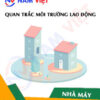
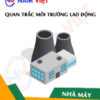
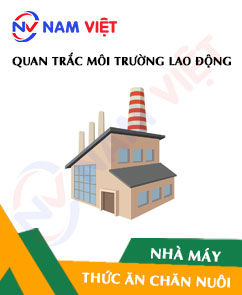
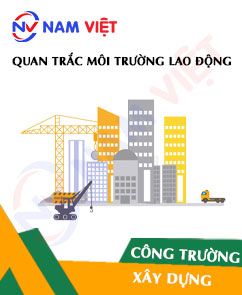





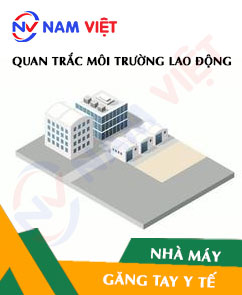
Review Occupational environment monitoring of a semiconductor (chip) manufacturing factory
There are no reviews yet.